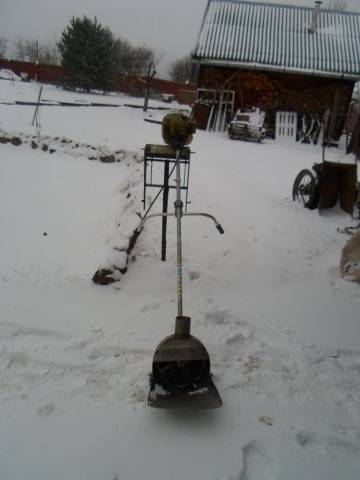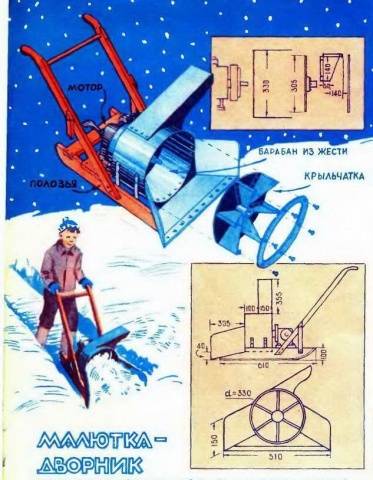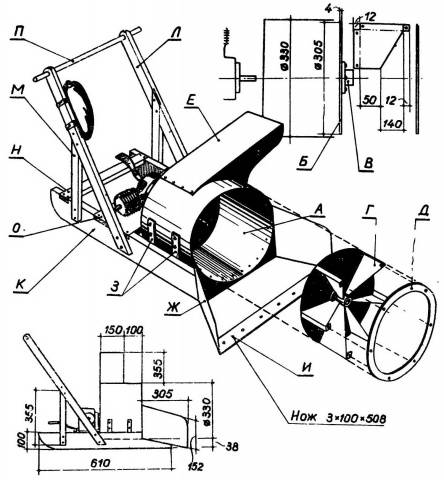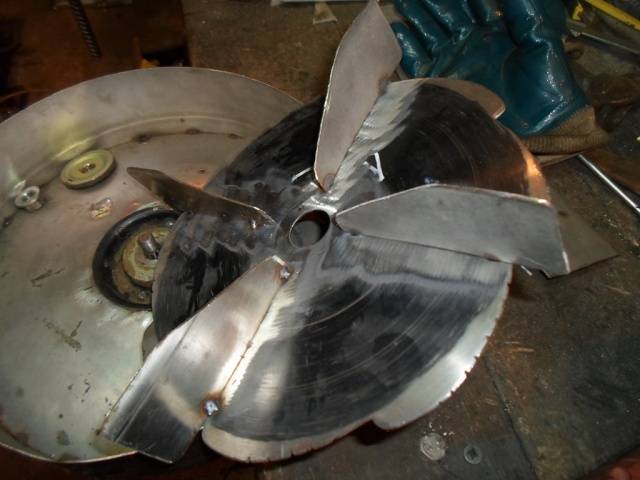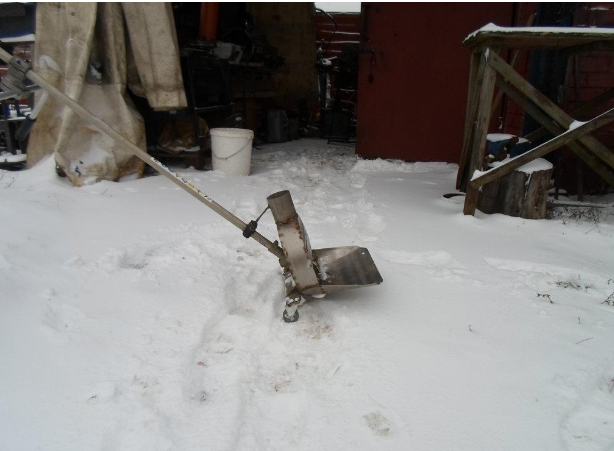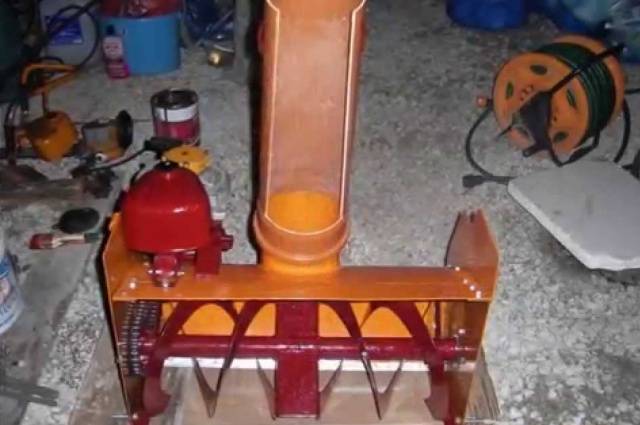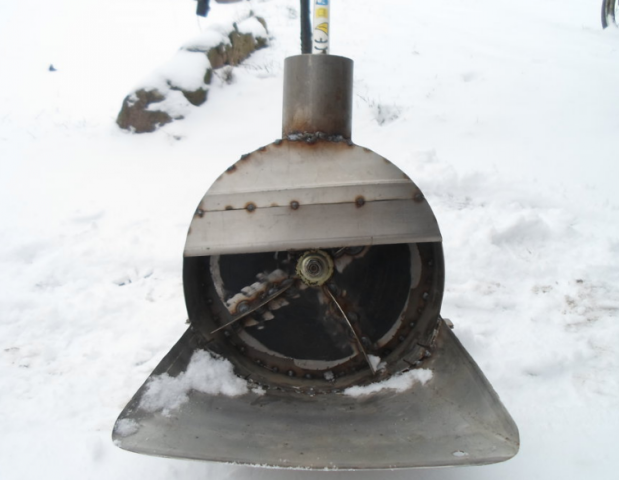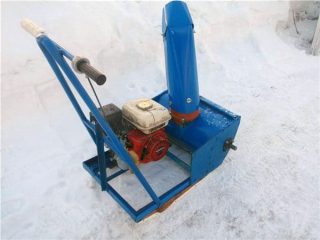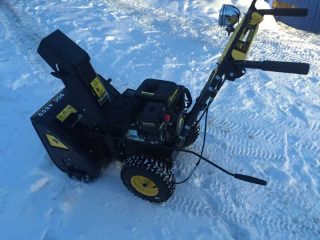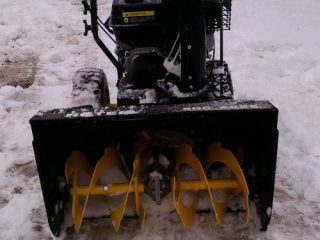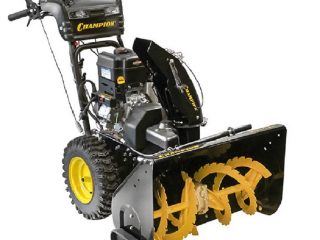Content
Equipment for snow removal in the store is expensive and not everyone can afford it. A way out of the situation can be found by collecting homemade snow blower from a trimmer, which will help clear the yard of freshly fallen snow.
Converting the trimmer into a snow blower
The device of such a homemade product is so simple that you do not have to build complex drawings and grind out details. You just need to make an impeller, which is attached to the trimmer instead of a knife, and place this whole structure in a casing.
Snow Blower Assembly Manual
Not every trimmer is suitable for making a snow blower. If the farm has an electric or brushcutter with a curved bar, in which the torque is transmitted to the knife by a flexible cable, then the conversion process does not even need to start. The fact is that such models of trimmers are low-power. The performance of the snow blower will be poor and the engine will constantly overheat.
A good snow blower will come from a powerful trimmer with a straight boom. Such an electric or gasoline scythe is characterized by the transmission of torque to the knife through a rigid shaft and a gearbox.
The device of snow removal equipment is simple. The working element is a nozzle, which is placed instead of a knife. It is an impeller with blades. For the manufacture of this part, you will need steel with a thickness of 1.5 mm. The impeller must be placed in a casing - a snail. For its manufacture, a large-diameter pipe segment is taken, usually within 300 mm.
Converting a trimmer with your own hands into a snow blower will do without complex drawings, but at least the simplest diagram should be at hand. It will help create a general understanding of the design.
Now let's take a step-by-step look at how to make a do-it-yourself snow blower from an electric or brushcutter:
- The manufacture of a snow blower begins with the body. If you are lucky enough to get a beer barrel, then you need to cut off a piece of 150 mm long from it. The workpiece is needed together with the bottom, since the trimmer gear will be fixed on it.
- A hole is drilled in the center of the bottom. Its diameter should be enough to pass the trimmer's working shaft, on which the impeller-shaped attachment will be put on. Mark the mounting points of the gearbox around the large hole. Usually there are three points. Bolt holes are drilled according to the marking.
- Now for the snow blower you need to make an exit - a deflector through which snow will be thrown out. A hole is cut in the side shelf of the case. It can be made square or round as you wish. The hole diameter is 100 mm. The branch pipe is welded to it later. And now we need to cut a blank in the shape of a half circle from a sheet of steel. This plug is used to weld 1/3 of the end of the face of the snail body. The plug will prevent snow from flying out of the snail forward, but will direct it into the deflector. The vent hole should be centered on the front end cap.
- Next, you need to make a rotor for the snowplow, that is, the impeller itself, which will throw snow. Trimmer disc knife is taken as a basis. But first, four blades of 250x100 mm are cut out of steel. The workpieces are made ideally the same size to avoid imbalance. The finished blades are cross welded to the disc.
- Now it's the turn to finish the deflector. The hole on the body is already ready, now you need to fix the pipe to it. It can be bent out of galvanized steel. The branch pipe is made 100 mm high and welded to the body.A knee is fixed to it of a similar length so that the snow is ejected to the side. It is better to make the deflector round. You don't have to make a knee on such a pipe. It can be taken from a plastic drain with a diameter of 100 mm.
- The last piece left to make is the guide vane. It is cut from a sheet of steel. You should get a workpiece with a size of 300x400 mm. On the sides, the sides are folded with a height of 20 mm. The finished blade is welded to the bottom of the body from the front side.
- All parts of the snow blower are ready, it remains only to assemble them into a single structure. First, the trimmer gear is bolted to the volute. A shaft comes out inside the housing. A homemade nozzle with blades is put on it.
A do-it-yourself snow blower from a trimmer will be considered ready when the rotary structure is installed on the frame. It is enough to weld a regular rectangle from the corners. From the bottom to the frame, wooden runners are fixed. On skis, it is easier to push the snow blower through the snow. The control handle is the native trimmer bar.
The video shows an example of a snow blower from a trimmer:
What is better to attach to the trimmer: auger or rotor
When making a snow blower from a trimmer, there are two options for installing the working mechanism: the auger and the rotor. Let's look at what is the difference between the designs, as well as their positive and negative sides.
Auger mechanism
In terms of efficiency, the auger outperforms the rotor. The mechanism consists of screw circular knives. Rotating, they cut even the stale, wet and icy cover. The spiral turns move the collected mass towards the center of the body, where the blades push it through the deflector. If you connect such a nozzle to the trimmer, it will be able to throw snow to the side at a distance of up to 3 m. However, it must be taken into account that the auger mechanism creates a large load on the engine. This is especially true when removing hard snow. Only a powerful trimmer can be used for this attachment.
It is difficult to make a nozzle on your own due to the design of the auger. You will need to accurately measure the distance between each turns. If it is different, the snow blower will throw around during operation. A lot of turning work is still required. The auger rotates on bearings, so it is necessary to grind pins and hubs. As an option, auger shovel you can buy it in the store, but at home it will be necessary to adapt it to the trimmer.
Rotary mechanism
The advantage of the rotary mechanism is the ease of assembly. After all, the mechanical part practically remains native. The impeller is made of a circular cutter that fits to the trimmer head. The range of snow throwing for such a design can reach 6 m.
The disadvantage of the rotor is its use only on loose and freshly fallen cover. Wet snow will stick in the snail, and pieces of ice can wedge between the blades.
The mechanical part of the snow blower can be chosen as you wish. But in any case, you need to remember that the trimmer is not designed for such a heavy load. The engine should be taken a break during operation so that it does not overheat.
